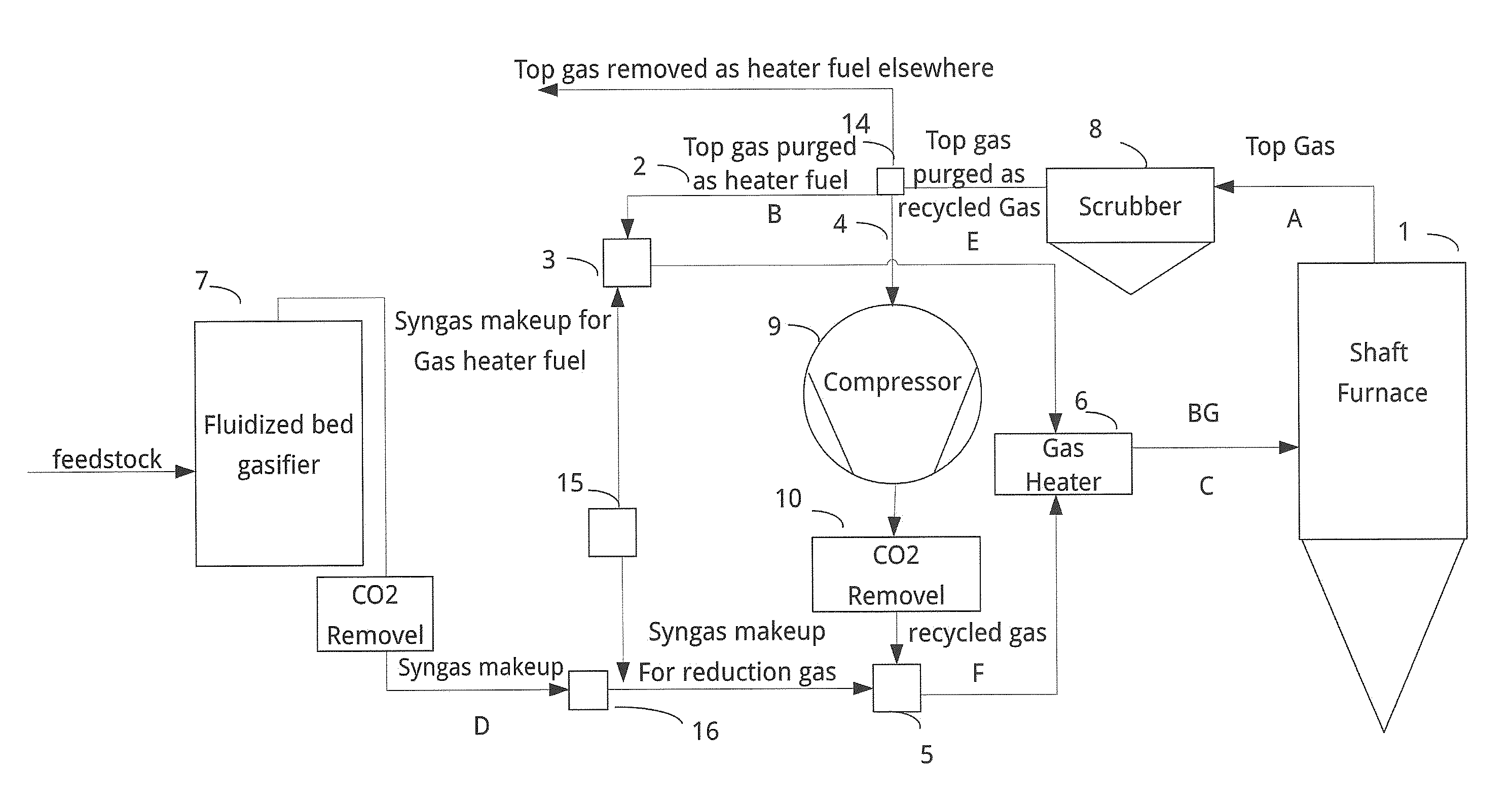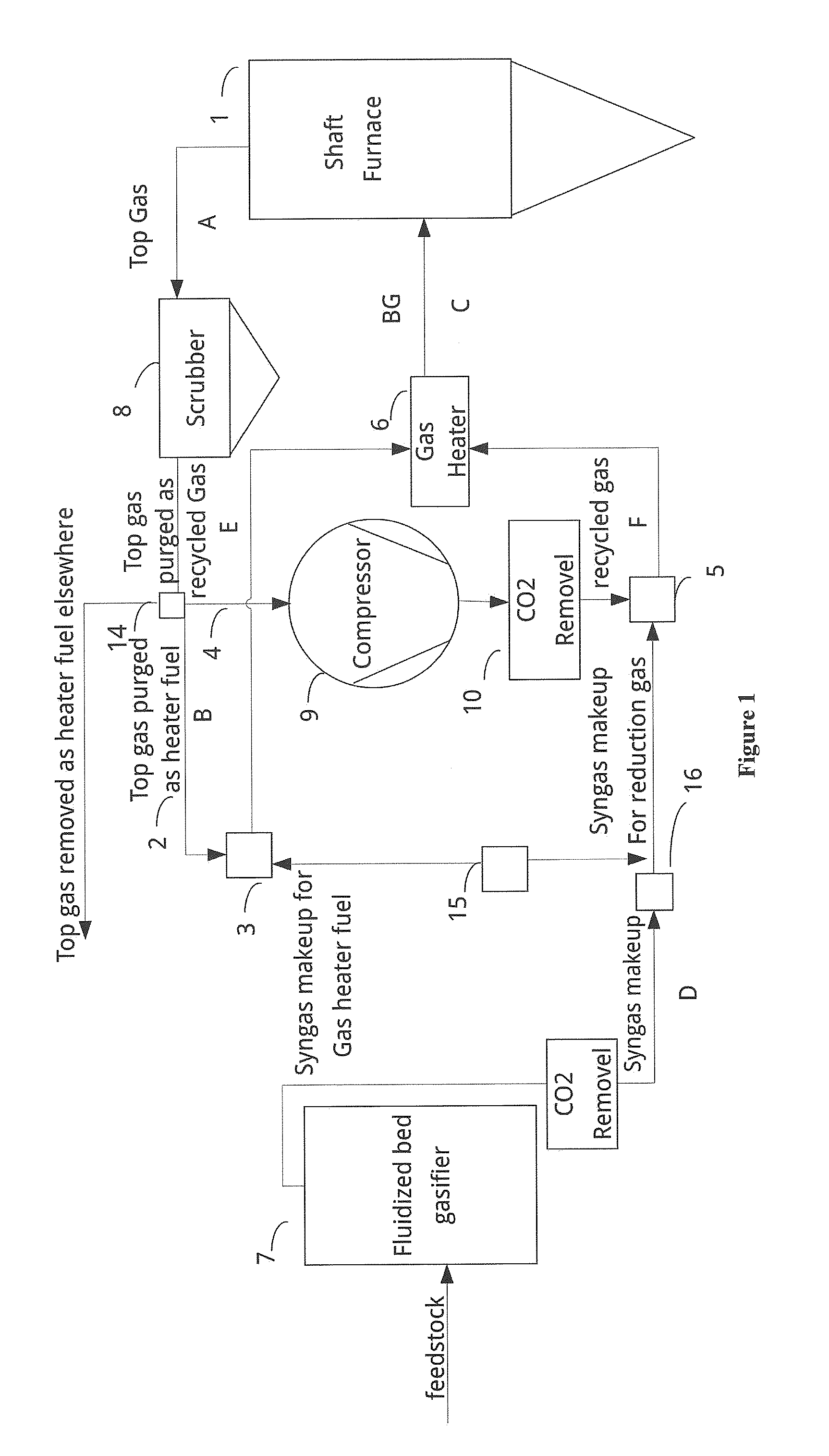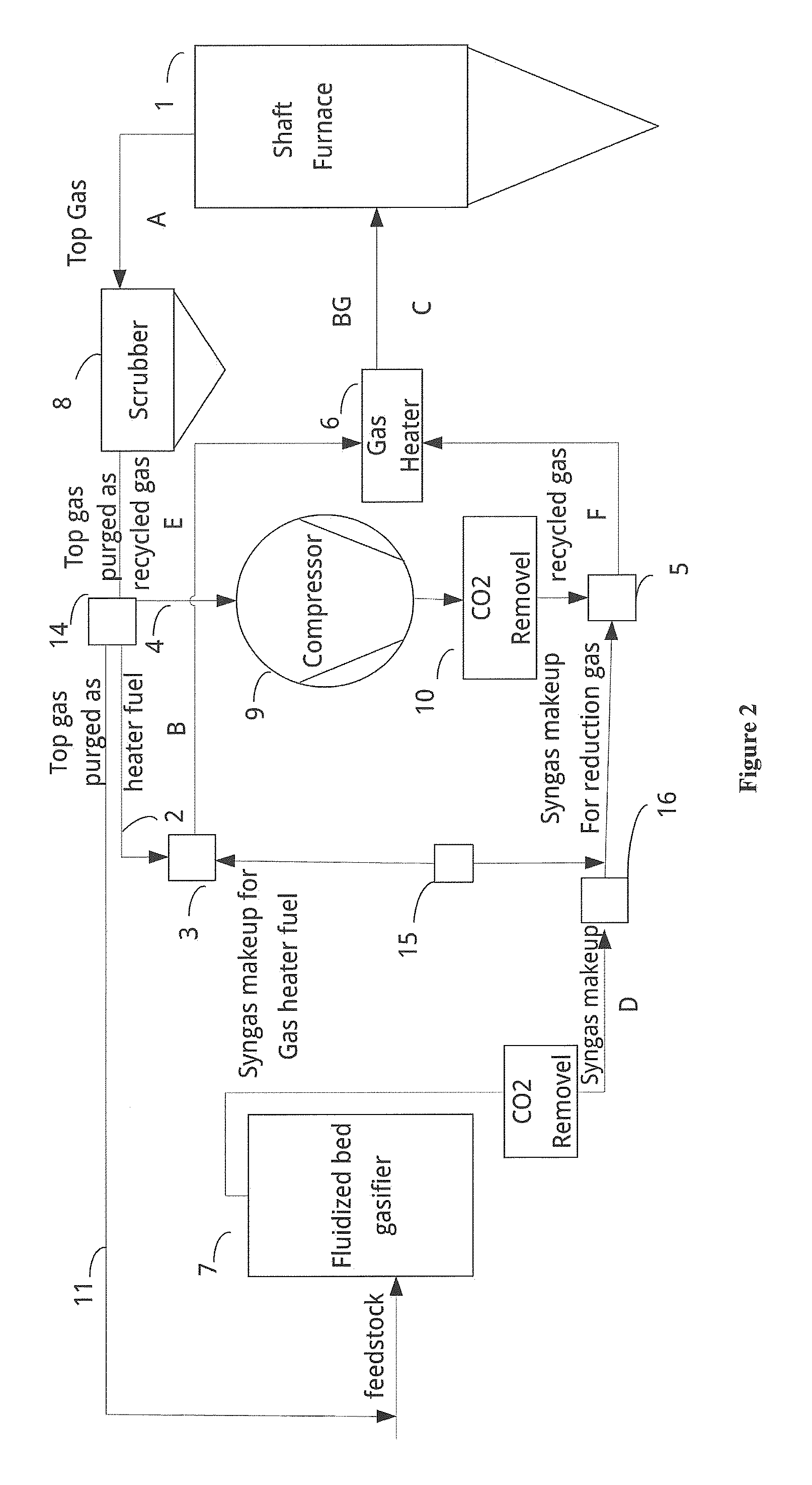Method and apparatus for recycling top gas for shaft furnace
a top gas and shaft furnace technology, applied in lighting and heating equipment, furnaces, manufacturing converters, etc., can solve the problems of high ash and sulfur content of lump ore and coal, low efficiency, and high energy and capital costs of processes, so as to reduce adverse environmental impact and improve energy efficiency
- Summary
- Abstract
- Description
- Claims
- Application Information
AI Technical Summary
Benefits of technology
Problems solved by technology
Method used
Image
Examples
example 1
Use of the Top Gas as Transport Gas Reduces Power Consumption
[0057]Table 1 below shows a comparison of energy consumption between using the shaft furnace (SF) top gas (TG) and CO2 as transport gas. By replacing CO2 with a portion of the top gas, the consumption of O2 at the gasifier was reduced from 1645 kgmol / h to 1604 kgmol / h. Because O2 is normally produced by an Air Separation Unit (ASU), less consumption of O2 resulted in less power consumption (from 26797 kW to 26129 kW) at the ASU, provided that the power consumption at the ASU per unit O2 remains 16.29 kW / kgmol. Furthermore, the volume of syngas required to produce DRI was decreased from 800 Nm3 / ton to 700 Nm3 / ton while the DRI production was increased from 142 ton / h to 144 ton / h. Less syngas required to produce DRI further contributed to less coal per ton of direct reduced iron. These results show that less power per ton of direct reduced iron is used by using the top gas as transport gas.
TABLE 1Comparison of Power Consumpt...
example 2
TG Volume to be Recycled was Reduced if Top Gas was Used as Fuel
[0059]Table 3 shows a comparative example illustrating that when a portion of the top gas was used as transport gas for the gasifier, the volume of top gas recycled as reduction gas was further decreased. Results here showed that the needed capacity of the DRI CO2 removal system was reduced by 20%, further reducing energy consumption of the system.
[0060]As shown in FIG. 1, top gas can be used as gas heater fuel without sending it back to the gasifier. By contrast, as in FIG. 2, the top gas is used as gas heater fuel as well as transport gas for the gasifier. The gas volumes at positions A, B, C, D, E and F in FIGS. 1 and 2 are shown in Table 3.
TABLE 3Comparison of Gas Volumes in FIG. 1 and FIG. 2PositionBDEFASF TGCSyngasRecycledRecycledSF TGpurgedBGMakeupgasgasFIG. 1196,92731,885 184,876 88,329123,360101,117(Nm3 / h)FIG. 2199,53061,199*186,738108,500 96,375 77,572(Nm3 / h)%—91% more——20% less23% less*This amount includes th...
example 3
Use of Top Gas as Transport Gas Increased Overall System Energy Efficiency, and Net Syngas Output Per Unit Coal, and Reduces O2 and Stem Consumption
[0063]FIG. 3 shows the overall arrangement of two exemplary gasifier systems, with the same coal consumption. In one, only CO2 was used as transport gas, while in the other, a portion of the shaft furnace gas was used as part of transport gas. In both cases, the syngas from the gasifier was cleaned through an AGR unit, and then mixed with the recycled top gas. As shown in Table 5, when a portion of the shaft furnace gas was used as part of the transport gas, a net volume increase in H2+CO+CH4 (1,830 Nm3 / h) was achieved while the consumption of oxidant and steam was respectively decreased by 1,311 kg / h and 11,323 kg / h.
TABLE 5Comparisons of Gasifier PerformanceRaw SyngasTransport GasOxidantHP SteamOutput Gas(H2 + CO + CH4)CO2 asCO252,636 kg / h71,420 kg / h266,687 kg / h113,334 Nm3 / hTransport Gas42.909 kg / hSF RG asCO251,325 kg / h60,097 kg / h234,52...
PUM
| Property | Measurement | Unit |
|---|---|---|
| temperature | aaaaa | aaaaa |
| power | aaaaa | aaaaa |
| power | aaaaa | aaaaa |
Abstract
Description
Claims
Application Information
 Login to View More
Login to View More - Generate Ideas
- Intellectual Property
- Life Sciences
- Materials
- Tech Scout
- Unparalleled Data Quality
- Higher Quality Content
- 60% Fewer Hallucinations
Browse by: Latest US Patents, China's latest patents, Technical Efficacy Thesaurus, Application Domain, Technology Topic, Popular Technical Reports.
© 2025 PatSnap. All rights reserved.Legal|Privacy policy|Modern Slavery Act Transparency Statement|Sitemap|About US| Contact US: help@patsnap.com



